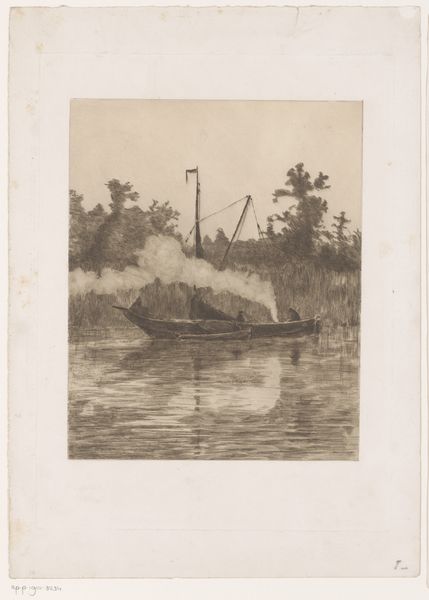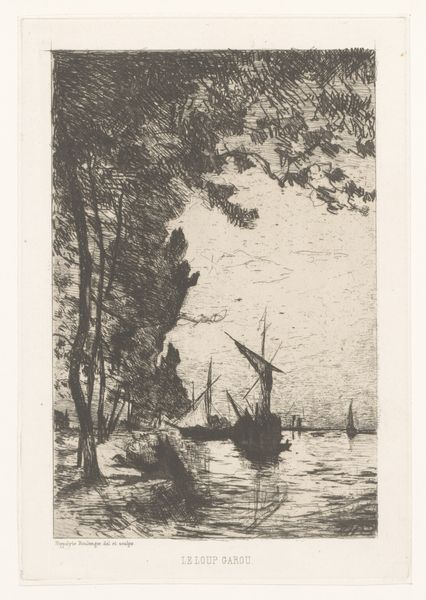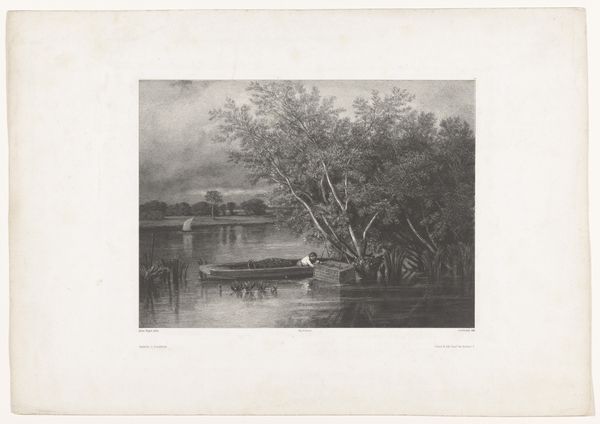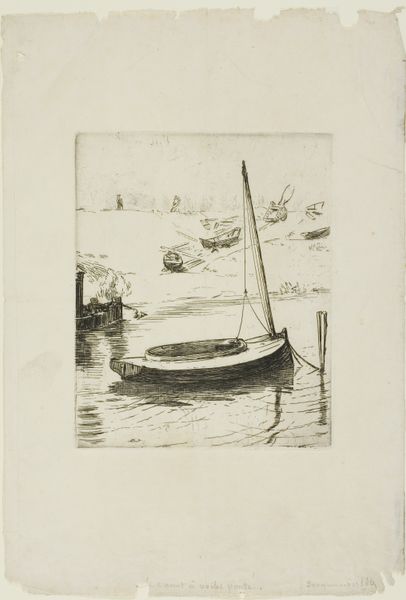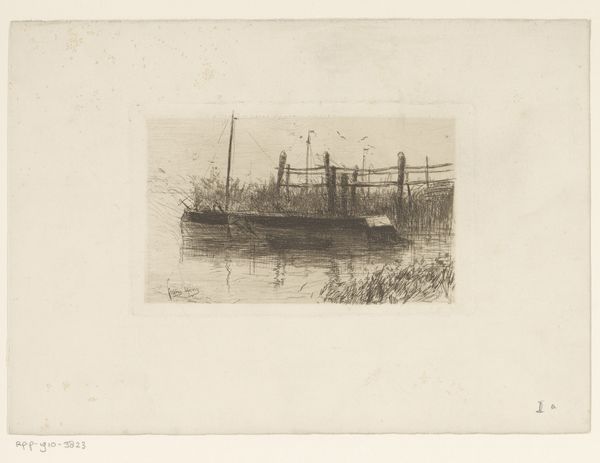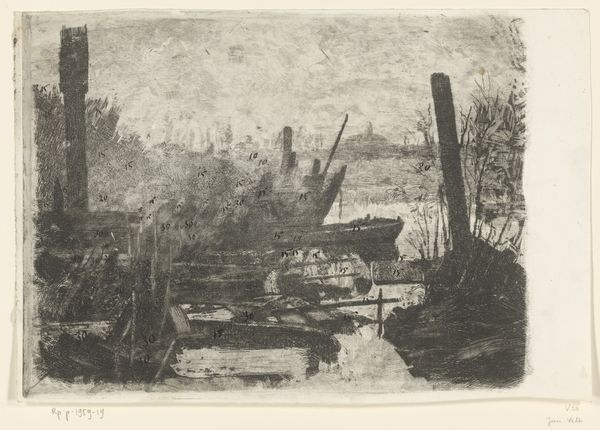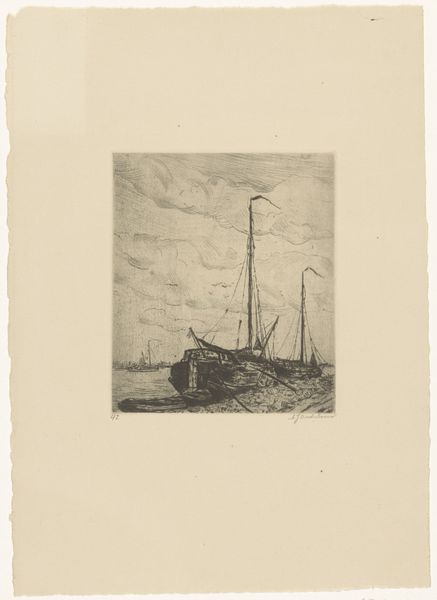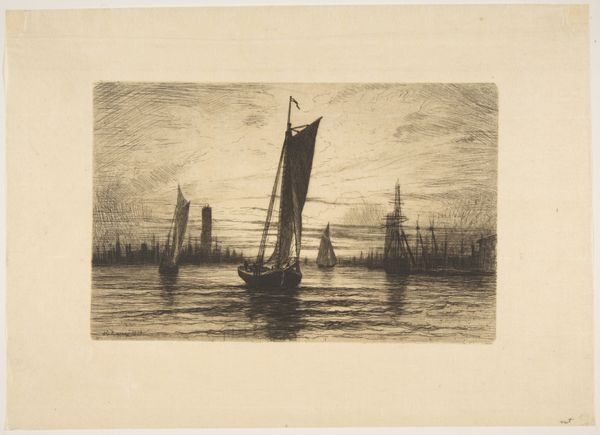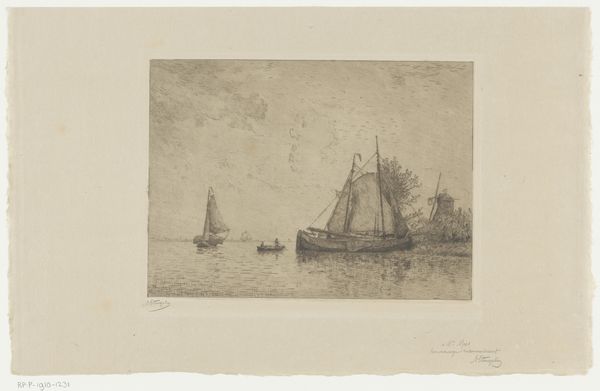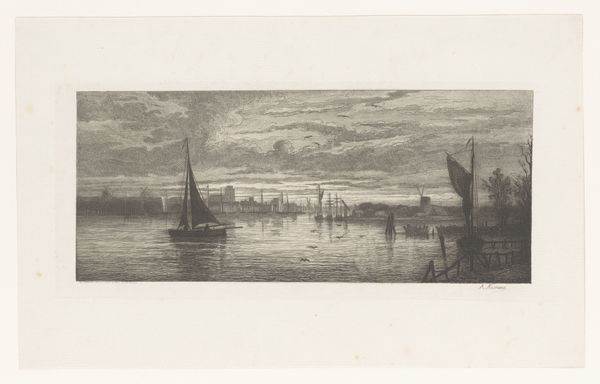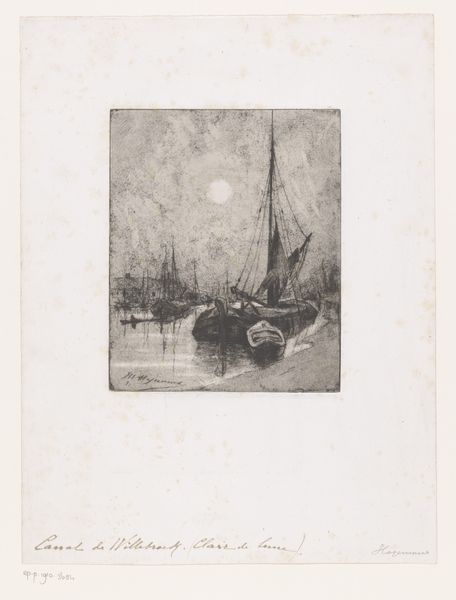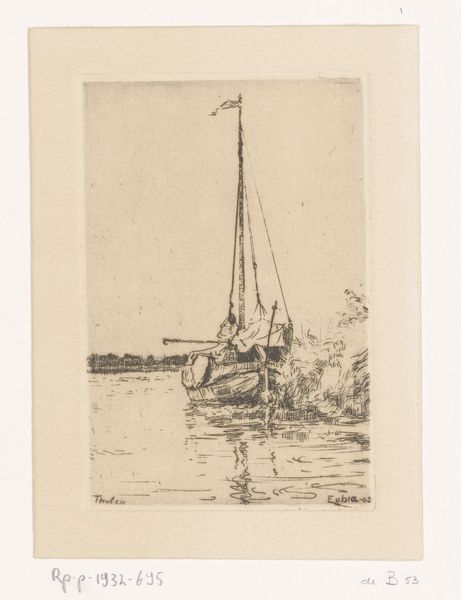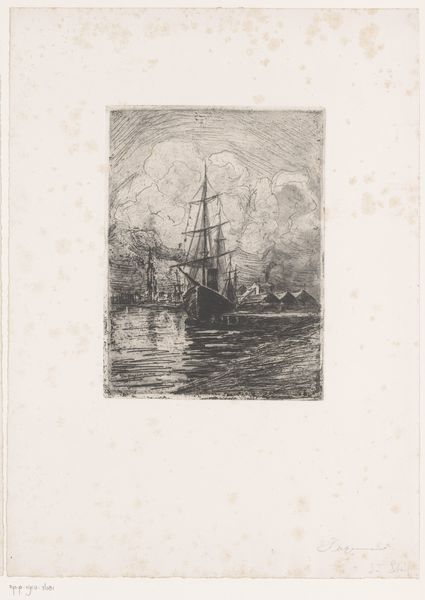
print, etching
# print
#
impressionism
#
etching
#
landscape
#
realism
Dimensions: height 318 mm, width 236 mm
Copyright: Rijks Museum: Open Domain
Curator: Here we have Jules Guiette's "Twee boten in een vaart," dating from between 1862 and 1901. It's an etching, an impressionistic yet realistic landscape capturing two boats on a canal. Editor: It evokes such a tranquil mood, almost melancholic. The tonal range is quite limited, mostly grays and blacks, giving it a hazy, dreamlike quality. I'm drawn to the reflection of the boat in the water—it’s so precisely mirrored! Curator: That precision is fascinating, considering etching's dependence on process. Guiette uses the etching medium—the very labor of creating lines and tones through acid and metal—to create this shimmering scene. How the social context may have shaped these materials, what role these materials play in society. It bridges the gap between realism’s focus on depicting observable life and Impressionism's interest in the fleeting effects of light. Editor: Precisely! Observe how the artist renders smoke billowing from the boats. It contrasts heavily against the verticality of the vegetation, thereby accentuating a certain sense of isolation, a stillness broken only by the suggestion of the boat’s movement. It's an investigation into shape, form, and spatial relations. Curator: True, yet it is crucial to investigate how those aesthetic effects might be understood by thinking about Guiette's working conditions and access to specialized knowledge and training. For the labourers on those vessels, there is an intersection of technology and nature where individuals navigate and contribute to society via their actions and environment. Editor: That contextual background is valuable, but the appeal of Guiette's print lies for me within its stark arrangement of horizontal water, the soft backdrop of trees, and the almost gothic shape of the ships. It suggests a symbolic meditation of journeys that I experience. Curator: Agreed, these individual journeys matter, of course. It gives us an opportunity to meditate on our own journeys, what labor we put into it and in what social framework. It highlights not only a tranquil scene but also the intricate connections between the materials, the workers, and the world. Editor: I leave seeing a lesson in compositional balance and a play on atmospheric tones, capturing the silent dance of light and shadow on water. Curator: Indeed. A tangible item symbolizing reflection both on the surface of water and the societal influences around it, it highlights material connections of labor and environment, thus prompting consideration beyond aesthetic taste.
Comments
No comments
Be the first to comment and join the conversation on the ultimate creative platform.
